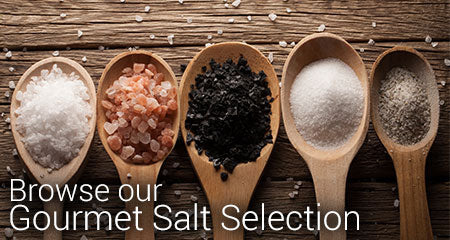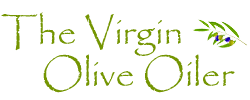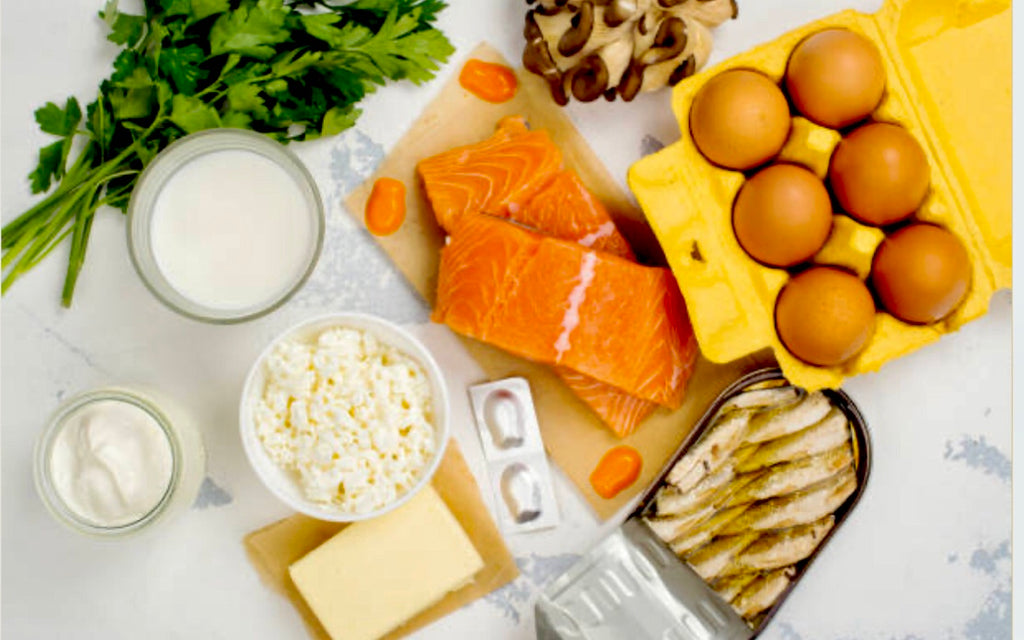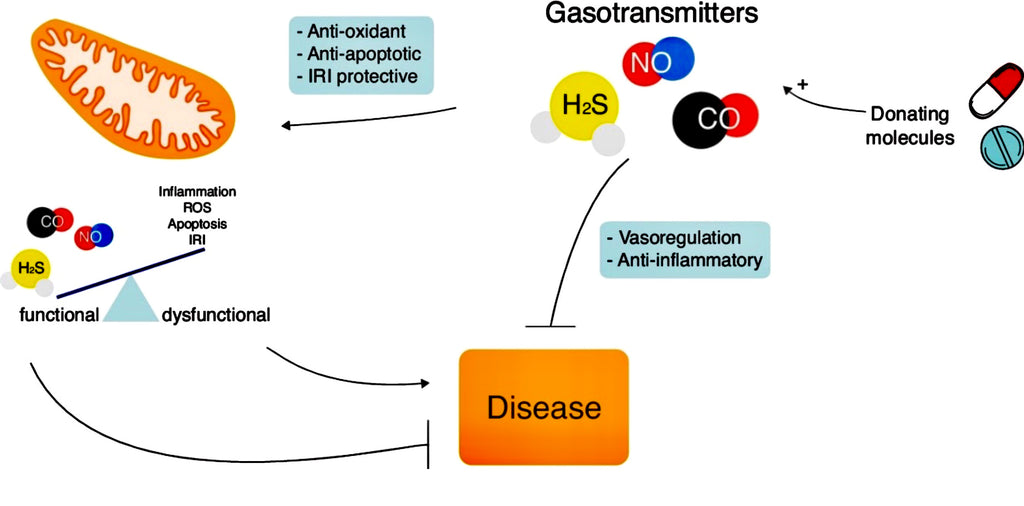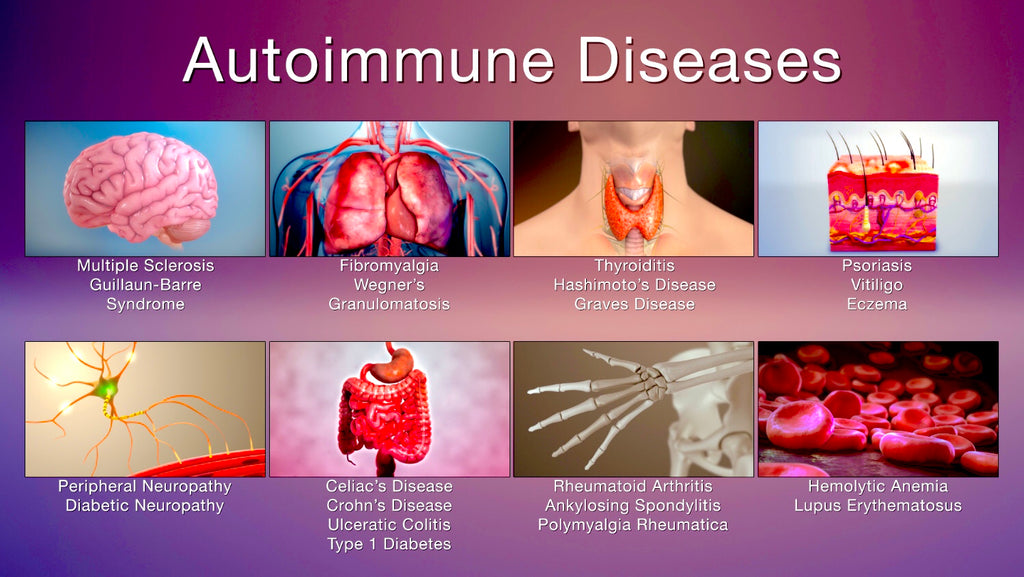Gasotransmitters? Say What?! #HP-EVOO - Blog #98
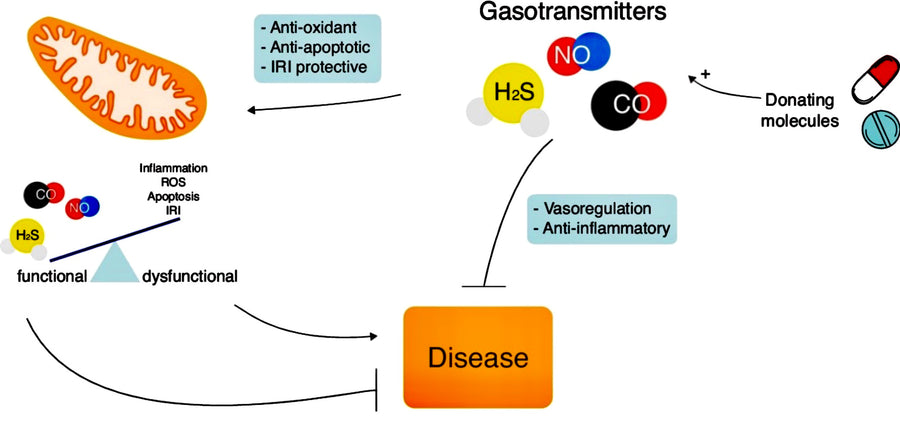
Hello Everyone! Welcome back to another Friday blog. Did you know that there is a gaseous communication system within our body? Gasotransmitters are tiny gas molecules produced endogenously (within the body) that are very important little messengers. They communicate between our microbiome and the immune system, our mitochondria, enzymes, the brain and even the neuronal architecture in the CNS (central nervous system). They are involved in countless intracellular functions - as well as extracellular functions such as dilating blood vessels, certain brain activities - memory, information recall and learning, uncoupling our mitochondria and much, much more. Let's delve in!
We’ve all heard of neurotransmitters - molecules that allow for neural transmission and communication in the brain and between neurons - but gasotransmitters are a relatively new discovery. So far, there are 3 gasotransmitters and several other “potential” molecules are being studied. “A gasotransmitter is defined as a small, generally reactive, gaseous molecule that, in solution, is generated endogenously in an organism and exerts important signalling roles. It is noteworthy that these molecules are also toxic and antimicrobial.” They regulate our biology in profound ways including apoptosis (cell death), proliferation (growth), cellular respiration and mitochondrial respiration as well as ATP synthesis (production of energy). We produce them enzymatically - and our microbiome produce them as a byproduct of consuming fiber, polyphenols and flavonoids.
“Endogenous gasotransmitters are freely permeable, small and reactive gaseous messengers, produced endogenously by an organism, being involved in several physiological processes.” So, our bacterial ‘farts’ are actually communication signals to our mitochondria or other structures to perform a function??!! 😂 Since they are freely permeable, they can easily cross the gut barrier and enter the blood to travel to their destination and regulate our biology. They can travel throughout the body - unobstructed by membranes - including the BBB (blood brain barrier). It is becoming clear that if we don’t produce enough of these molecules, disease soon follows. So, what molecules are we talking about and what do they actually do that promotes our health and wellbeing?
NO (nitric oxide) - The Nobel Prize in Physiology was awarded to 3 North-American scientists in 1998 for their discovery that NO is a signaling gas molecule in the cardiovascular system. We know about NO because of the drug viagra used for vasodilation to treat erectile dysfunction. “NO is able to bind into stable compounds, be deposited in cells, and be transported over long distances in the body.” The elucidation of NO’s role in dilating blood vessels and protecting the cardiovascular system - as well as sexual function in both men and women - has led to the realization of many other jobs it is involved in - such as dilating blood vessels and improving blood flow to organs, improves digestion, protects skin against UV light, is involved with hormone release, regulates neurotransmission, immune function, as well as glucose uptake and the proper folding of insulin. 😳 Well, THAT’S IMPORTANT! Particularly when the majority of us are either diabetic or insulin-resistant. It is a gas that literally lasts for only a couple seconds and is gone - it delivers its message and then disappears. In the cardiovascular system, it dilates blood vessels in response to exercise. Sensors on the glycocalyx (lining of blood vessels) respond to the shear-force of rushing blood by increasing NO production. This dilates our blood vessels and enhances oxygen delivery to our muscles and other tissues in the body. The amino acid L-arginine is required for the endothelial enzyme that produces NO. Since the discovery of NO, two others have made the list - CO (carbon monoxide) and H2S (hydrogen sulfide).
CO (carbon monoxide) - “CO is a gasotransmitter with a number of biological effects: vasodilation, neurotransmission, inhibition of platelet aggregation, modulation of inflammation, proliferation, cell death, etc.” Who knew that small doses of CO were beneficial? “The main source of endogenous CO is the hemoglobin of old erythrocytes” reduced by Heme oxygenase (HO). “The HO/CO system is one of the key components of protection against cellular stress caused by ROS, heavy metals, lipopolysaccharides, and other inflammatory factors.”
H2S (hydrogen sulfide) - H2S is highly involved in many of the membrane channels of the cell - particularly potassium (K+)channels. K+ channels form aqueous pores through which K+ can flow. Others include Ca2+ (calcium) activated K+channels, ATP-sensitive K+ channels, acid-sensitive K+ channels, voltage-gated channels, and it even opens K+ channels on the inner mitochondrial membrane. It is catalyzed by the enzyme CSE (cysteine γ-lase). The amino acid cysteine - although it isn’t considered an essential amino acid - is also required to produce our major antioxidant glutathione (GSH). “Deficiency of cysteine and GSH are associated with numerous etiologically unrelated diseases including skeletal muscle wasting and cancer.” We now know that if you aren’t producing enough H2S - or lacking the gut microbes that produce it - we end up with low glutathione production, high blood pressure, inflammation, mitochondrial dysfunction and a host of chronic diseases. H2S regulates the membrane potential and moderates vascular tone.
There are a few other “potential” gasotransmitters including - SO2 (sulfur dioxide), CH4 (methane), CO2 (carbon dioxide), H2 (hydrogen), and NH3 (ammonia). We know these substances to be toxic and exert antimicrobial effects - but they are doing other things too. So, what are these gases actually doing inside the body? They regulate our biology in profound ways including apoptosis (cell death), proliferation (growth), cellular respiration and mitochondrial respiration as well as ATP synthesis (production of energy). Interestingly, H2S (hydrogen sulfide) is also very involved in relaxation/contraction = homeostasis of blood vessels.
“Not only do bacteria synthesise each of these gases, but the molecules also have important signalling or messenger roles in addition to their toxic effects.” Understanding that these gas molecules are actually toxic makes one wonder how they are affecting us in such positive ways - other than exerting their antimicrobial effects against pathogens. One answer is that they trigger our own antioxidant systems to produce more protection - such as glutathione. Further, the more antioxidants, polyphenols and flavonoids we consume in our diet, the better this system works - as oxidants destroy these postbiotic messages!
Research is demonstrating that an “alteration in the composition of bacteria-producing metabolites may initiate and sustain the pathogenic processes of neurodegeneration.” When we don’t have a healthy, balanced and diverse population of gut microbes, we become lacking in the products they make - as well as becoming deficient in B vitamins and vitamin K - synthesized by our gut microbes. This allows for inflammation to rise driving neurodegenerative diseases such as Alzheimer’s, dementias, MS (multiple sclerosis) and even (PD) Parkinson’s Disease. Individuals with PD are lacking gut microbes that produce H2 (hydrogen) and report “decreased hydrogen production by intestinal microbiota may be associated with the development and progression of PD.” They further state “oral administration of hydrogen water ameliorates Parkinson’s disease (PD) in rats, mice, and humans.” What?!!! This is really profound as the drugs for PD don’t work well and have been described as worse than the disease - I’ve heard this from many of my PD patients over the years.
Metabolites produced from our microbiome represent up to 1/2 of the metabolites in our blood! 😳 WHAT?!!! “Gut metabolites are the intermediates or end products of bacterial metabolic processes. Some important metabolites produced include aromatic amino acids and short-chain fatty acids (SCFAs) derived from dietary sources such as fibres and fruits; endogenous metabolites derived from bile acids and cholesterol.” Let’s look at some of the other important metabolites that are not gasotransmitters.
- acetate - shortest SCFA improves cardiac function, memory formation and red blood cell generation to name a few.
- butyrate - SCFA that feeds our enterocytes, decreases inflammation, helps maintain the gut barrier by strengthening the tight-junctions, and improves the balance of gut microbes that work together.
- propionate - “lower lipogenesis, serum cholesterol levels, and carcinogenesis in other tissues.”
- aromatic amino acids - such as tyrosine a precursor for dopamine, epinephrine and norepinephrine
- urolithin A - improves mitochondrial function and mitophagy
- anthocyanins - “possess antidiabetic, anticancer, anti-inflammatory, antimicrobial, and anti-obesity effects, as well as prevention of cardiovascular diseases (CVDs)”
- imidazole - powerful antifungal properties
Obviously, these are only a few of the primary metabolites produced by our gut microbes when we feed them what they like to eat - fiber, polyphenols and flavonoids. They work together to maintain intestinal homeostasis as well as regulate neurological, immune and endocrine function. They regulate our biology and have enormous effects on our health. Lack of these “postbiotic” metabolites results in a host of chronic diseases, including “metabolic diseases, cardiovascular diseases, gastrointestinal diseases, neurodegenerative diseases, and cancer.” They are involved in allergies, asthma and autoimmune diseases as well - due to their affects on the immune system.
Okay - so what can we do to normalize levels of our gasotransmitters and post-biotic metabolites, diversify our microbiome and recover species that we’ve lost over the years due to taking antibiotics and exposure to glyphosate?
1)Protect the Oral Microbiome - this is a rich concentrated community of microbes second in number after the colon. A healthy oral microbiome produce a lot of NO that kills pathogens such as cold viruses, flu, covid-19, food-borne bacteria, parasites, etc. Salivary NO levels correlate with lower dental caries.
- Floss your teeth well along the gum line to disrupt microbial biofilms (communities). Avoid microplastics by switching to natural silk floss - and floss after each meal. These are often gingival microbes that promote gum disease, drive inflammation and gain access to our brain through the tiny blood vessels at the gum line.
- Scrape your tongue from as far back as you can to the front until the collected fluid runs clear. Your tongue should be pink (not white). This mechanically removes the bulk of ‘bad guys’ and helps your oral microbiome grow and be able to fight the rest.
- Lower/avoid sugar, sweetened beverages - particularly soda and juice - as well as high-carb highly-processed foods to decrease the pathogenic microbes from taking up residence.
- Avoid fluoride toothpaste - fluoride is not only a bacteriocide that kills your oral microbiome - but also a neurotoxin that promotes dementias and brain inflammation.
- Filter chlorine, fluoride and microplastics out of your drinking water
- Take a HP-EVOO shot full of polyphenols!!
2)Practice Nasal Breathing -
- When we take deep breaths through our nostrils, the shear-force activates tiny hair like sensors on the lining of the respiratory tract and produce NO. It is one of our primary defense strategies against pathogens - killing bacteria, viruses and parasites
- NO also dilates the bronchioles as well as the pulmonary arteries to enhance oxygenation throughout the body.
- Nasal air contains lots of NO, but no CO. The lower airways contain both NO and CO - whereas the sinus mucosa produces H2S. There are altered levels of H2S in individuals with chronic sinusitis.
3)Acidify the Stomach - the HCl (hydrochloric acid) in the stomach is a powerful antimicrobial that kills a range of pathogens and protects us from having all but a few species of microbes populating the small intestine - where they shouldn’t be.
- If you are taking an “antacid” or PPI (proton pump inhibitor), wean off. This prevents you from properly acidifying your stomach. Without enough stomach acid, you can’t fully break down proteins and release nitrogen for NO production from your food - or free your minerals and vitamins for absorption.
- Take a 1-2T shot of ACV (apple cider vinegar) or RWV (red wine vinegar) in some water about 5-10 min prior to eating.
- Take a pinch of sea salt (Celtic or Himalayan) to provide substrate for the production of HCl from NaCl (sodium chloride)
- Take a shot of HP-EVOO! This enhances the absorption of your fat-soluble vitamins and provides a healthy dose of polyphenols to feed your gut.
4)Increase Dietary Fiber - Fiber is the prebiotics or food for your microbiome. You can’t grow a population of probiotic gut microbes without giving them food. They like fiber, polyphenols, flavonoids and SCFAs (short-chain fatty acids).
- Eat veggies first - this allows for the formation of a protective viscous layer of fiber/water providing extra protection to the single cell layer in the small intestine and helps to prevent leaky gut. Further, it slows the absorption of glucose to prevent the spike in glucose followed by insulin.
- Take some indigestible fiber such as GOS (galactooligosaccharide) or konjac root with a glass of water 30 min prior to eating. This also works to provide a protective viscous layer, slows the absorption of glucose.
- Try to aim for ~50-150g fiber daily. The average American consumes ~15g. We are starving our microbiome.
5)Increase Dietary Polyphenols - Colorful vegetables, fruits and HP-EVOO. These are another source of prebiotic or food for our gut microbes and mitochondria. Interestingly a study in 2023 out of UC Davis, CA looked at the polyphenols in smoothies with and without bananas - since bananas are known to be high in PPO (polyphenol oxidase) that turns them brown - researchers reported that bananas destroy polyphenols from other fruits - such as berries - in the smoothie! Those in the study who drank the banana smoothie had 84% lower levels of flavanols in their body compared to the control group - and the PPO in bananas kept wiping out more polyphenols after ingestion. 😳 “It is possible that PPO in banana could still play a role in affecting flavan-3-ol bioavailability, even post-intake.” So, don’t add those bananas.
6)Take a Probiotic - Find one that has been researched for effectiveness. There are a few around, such as Seed. I have no affiliation with anyone. They have a capsule within a capsule. It is the food or prebiotic in one and the probiotic in the other. It is worthy to note that if you take a probiotic, it won’t work if you don’t consume fiber and polyphenols - they’ll die if you don’t feed them.
7)Eat Fermented Foods - kefirs, kombucha, fermented pickles, raw sauerkraut, kimchi, miso, natto, range of fermented vegetables and fruits, vinegars with the ‘mother.’
- Raw, fermented sauerkraut is full of prebiotics, probiotics and postbiotics. It is high in vitamin C and contains certain acetobacters that can metabolize glyphosate - to aid in detoxification.
- Fermented vegetables are high in fiber or prebiotics - food for your microbes.
- These foods are full of living probiotics. These are the good guys!
- Don’t throw away the juice - it’s full of the powerful “postbiotics” that we are trying to get!!
8)Eat Organic - avoid GMO, glyphosate and pesticides - they are antibiotics = anti-life. These kill our microbiome and cause massive dysfunction in the gut and contributes to many other chronic diseases.
9)Eliminate Plastics - plastic water bottles, plastic food containers, salt contaminated with microplastics, BPA (bisphenol A) found in can liners and receipts, flame retardants (polychlorinated biphenyls and polychlorinated naphthalenes), plasticizers and UV stabilizers (benzotriazoles).
- Microplastics increase DNA strand breakages
- Cause greater production of ROS.
- Oxidative stress caused by inflammation promotes the dominance of more resistant bacteria such as Enterobacteriaceae.
- “Micro- and nanoplastics cross biological barriers to promote immune and inflammatory responses. Where microplastics impact host immunity, this can further cause changes in gut microbial community composition and functioning.”
- “The gut microbiome influences not only the host immune system, but also contributes to digestion and the provision of essential nutrients, the degradation of harmful substances and pathogen control within the gut.”
- Microplastics cause dysbiosis (imbalance) of the gut microbiome - literally changing the microbial communities - “impacting rates and extents of dispersal since they provide a surface for microbial attachment and thereby can aid the transport of microbial cells, including pathogens, both around the globe and into the gut.”
- Microplastics tend to enhance abundance of pathogens and invasive species, while inhibiting beneficial taxa.
- Microparticles can clog the digestive system of many species
- They are endocrine disrupters - sitting on hormone sites and causing hormone imbalance.
10)Eliminate Toxins and Heavy Metals -
- Eat Organic to avoid glyphosate and other pesticides/herbicides
- Use clean ingredients on your skin and hair
- Use distilled vinegar and water to clean
- Natural detergents for your dishes and clothes
- HEPA air filters in your home and office to remove environmental toxins and chemicals from off-gassing rugs and furniture.
- Stop using pesticides/herbicides on your lawns - exposure to these chemicals is highly linked with diabetes, Parkinson’s and dementias.
- Filter your drinking water to remove chlorine and fluoride as well as other toxins.
- Limit certain foods high in heavy metals: tuna (mercury), rice (arsenic) -“inorganic arsenic is found in the two outer layers of the grain (i.e., bran and germ), and the bran and germ are removed to refine the grain into white rice. Thus, a greater concentration of arsenic is found in brown rice than in white rice.” Multiple cancers are linked to arsenic exposure - cancers of the digestive tract, breast, prostate, liver, kidney, and lymphatic systems. Lead - pesticides, pipes, putties. Cadmium - smoking, exposure to refineries and waste dumps - some foods can be contaminated as well - Aluminum and some others can build to toxic levels as well.
- Work to reverse fatty liver - heal your liver, the body’s major detoxifying organ responsible for phase 1,2 detoxification to make it more water-soluble in order for the other detoxifying organ, the kidneys to flush out.
11)Avoid Artificial Sweeteners, gums, preservatives and dyes - your gut microbes can’t process these. They cause dysbiosis with decline of beneficial microbes and proliferation of pathogens.
12)Increase antioxidant-rich foods. This is where ‘eat the rainbow’ comes in to play. The more colorful organic vegetables and fruits - as well as the more variety - the broader the food source for our microbiome. This promotes diversity, which is key in creating a healthy microbiome. Antioxidants scavenge the ROS (reactive oxygen species) which and allows the gasotransmitter levels to be optimal.
13)Increase Dietary Protein - The enzymatic production of gasotransmitters relies on protein. Our immune cells are also made from protein. We can’t deliver O2 without hemoglobin, which is protein based. L-Argentine increases NO, while cysteine increases H2S. The recommendation based on the latest research is roughly 1g/lb of ideal body weight. This can be challenging, but once you figure out what you need you can find ways to achieve it. If you are vegan or vegetarian it can be way more difficult. Choose clean proteins: grassfed beef and lamb, wild-caught fish and seafood, pastured chicken, turkey and eggs. Aim for the A2 casein for milk, as it is way less inflammatory.
14)Increase Healthy Fats - Fat is SO IMPORTANT for proper function of your digestion and your brain. In fact, a study out of Harvard showed no associated risk of Parkinson’s in individuals consuming full-fat foods - including dairy. “However, those who consumed at least three servings of low-fat dairy a day had a 34 percent greater chance of developing Parkinson’s than people who consumed less than one serving per day.” The cell membranes in the brain are 70% fat - with a good amount of cholesterol. Cholesterol is crucial for healing the body. It is the innocent bystander in cardiovascular disease. Healthy fats: EVOO, grassfed Ghee, grassfed butter, coconut, avocado and nuts and seeds.
15)Increase HP-EVOO - high polyphenol extra virgin olive oil - acts to protect all areas of the body against disease in a dose-dependent manner.
- Oleic acid high in EVOO helps repair the gut lining by stabilizing cell membranes. Remember the lining of the small intestine is only one-cell-layer thick. The mono-unsaturated fat provides pliability to the cell membrane.
- The LCFAs (long-chain fatty acids) in EVOO provide food for our gut microbes when it gets chopped up into smaller SCFAs (short-chain fatty acids). This provides ketones that nourish the brain and mitochondria.
- A healthy dose (4T) HP-EVOO first thing in the morning tells the brain no glucose is needed and to burn stored fat.
- It also encourages the transition of white fat to brown fat due to mitogenesis (proliferation of mitochondria) - brown fat is brown because of so many mitochondria and produces heat.
- Triggers mitochondrial uncoupling and mitogenesis (make more mitochondria)
- Activates autophagy (self devour) the body’s clean up system
- Protects the neurological system, brain and myelin sheath
- The overwhelming theme throughout the research is that EVOO promotes health in a dose-dependent manner. The more HP-EVOO you consume in raw form, the better healthspan as well as lifespan. The Greeks consume 1L/person/week. This is roughly 6.5T per day.


